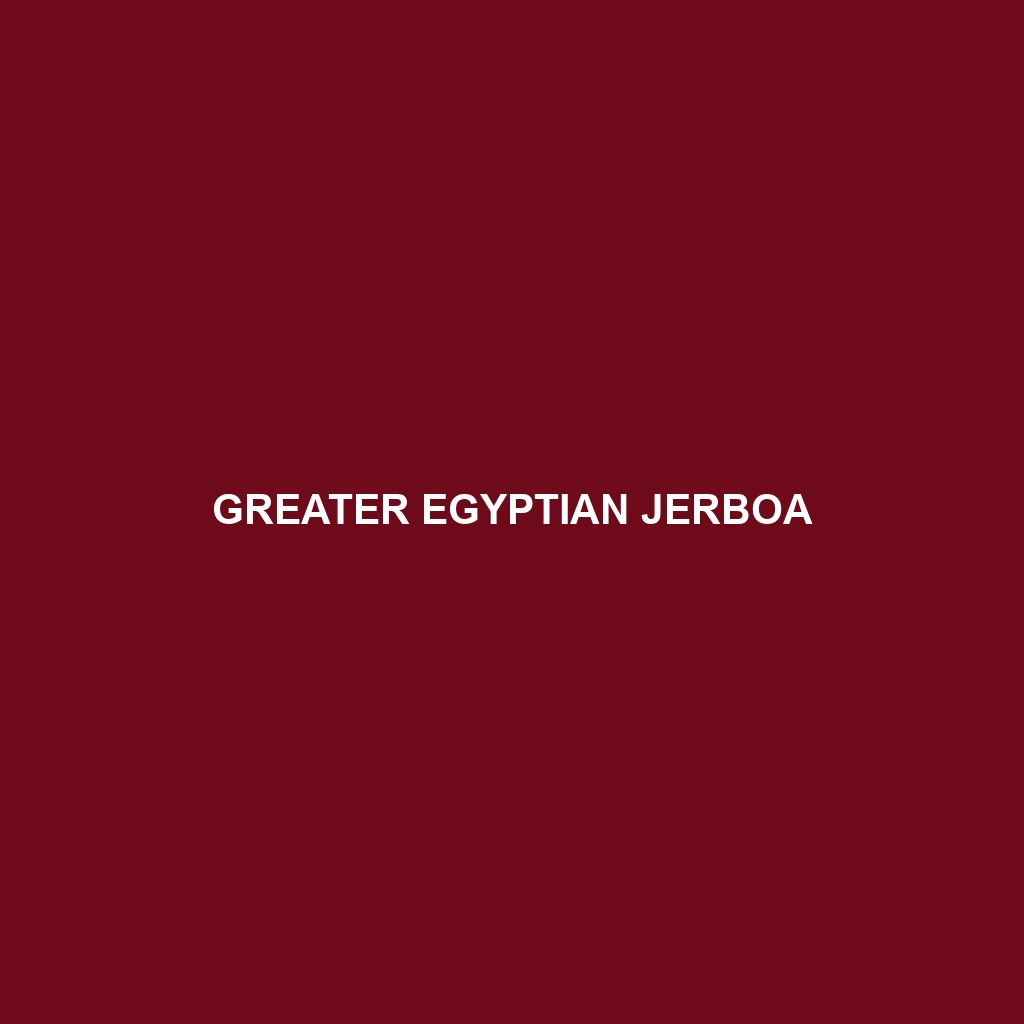Greater Egyptian Jerboa
Common Name: Greater Egyptian Jerboa
Scientific Name: Jaculus orientalis
Habitat
The Greater Egyptian Jerboa primarily inhabits the arid regions of North Africa and parts of the Eastern Mediterranean. It is often found in sandy deserts and grasslands, where it prefers to burrow in loose soil. These environments provide the necessary cover and terrain for their unique jumping locomotion, allowing them to evade predators efficiently.
Physical Characteristics
The Greater Egyptian Jerboa is a medium-sized rodent, typically measuring between 20 to 27 centimeters in length, with a long tail that can be twice the length of its body. They have a distinctive golden-brown fur that provides excellent camouflage against the desert landscape. Notably, their large hind legs enable impressive leaps that can exceed three meters in distance, while their long ears enhance their acute sense of hearing. These features make the Greater Egyptian Jerboa an adept survivor in their harsh habitat.
Behavior
This species exhibits primarily nocturnal behavior, emerging at night to avoid the extreme heat of the day. Greater Egyptian Jerboas are known for their remarkable agility and jumping abilities, which they use to navigate the sandy terrain swiftly. Socially, they tend to be solitary outside of the mating season, and when threatened, they employ rapid escape tactics by leaping high into the air to evade predators.
Diet
The diet of the Greater Egyptian Jerboa mainly consists of seeds, roots, and various desert vegetation. They are adapted to survive on very little water, obtaining moisture from their food sources. During their nocturnal foraging, they typically consume grains and insects, playing a significant role in seed dispersal within their ecosystem.
Reproduction
Breeding among Greater Egyptian Jerboas typically occurs in the spring, with a gestation period of about 25 days. Females usually give birth to a litter of 2 to 4 young, who are born blind and hairless. These offspring mature rapidly, becoming independent within a few weeks. The short reproductive cycle enables populations to recover quickly in favorable conditions.
Conservation Status
The Greater Egyptian Jerboa is currently classified as “Least Concern” according to the IUCN Red List; however, habitat loss and climate change are potential threats to its population stability. Continued monitoring is essential to ensure this species does not face future vulnerabilities.
Interesting Facts
1. The Greater Egyptian Jerboa can jump up to 3 meters in one leap, making it one of the most agile rodents in the desert.
2. Their long tails help them maintain balance while performing acrobatic leaps.
3. Jerboas are unique in that they can go for months without drinking water, relying on their diet for moisture.
Role in Ecosystem
The Greater Egyptian Jerboa plays a critical role in its ecosystem by aiding in seed dispersal, which promotes plant diversity. Additionally, they serve as prey for various predators, including birds of prey and snakes, thus contributing to the food chain. Their burrowing behavior helps aerate the soil, further enhancing the health of their desert habitat.
